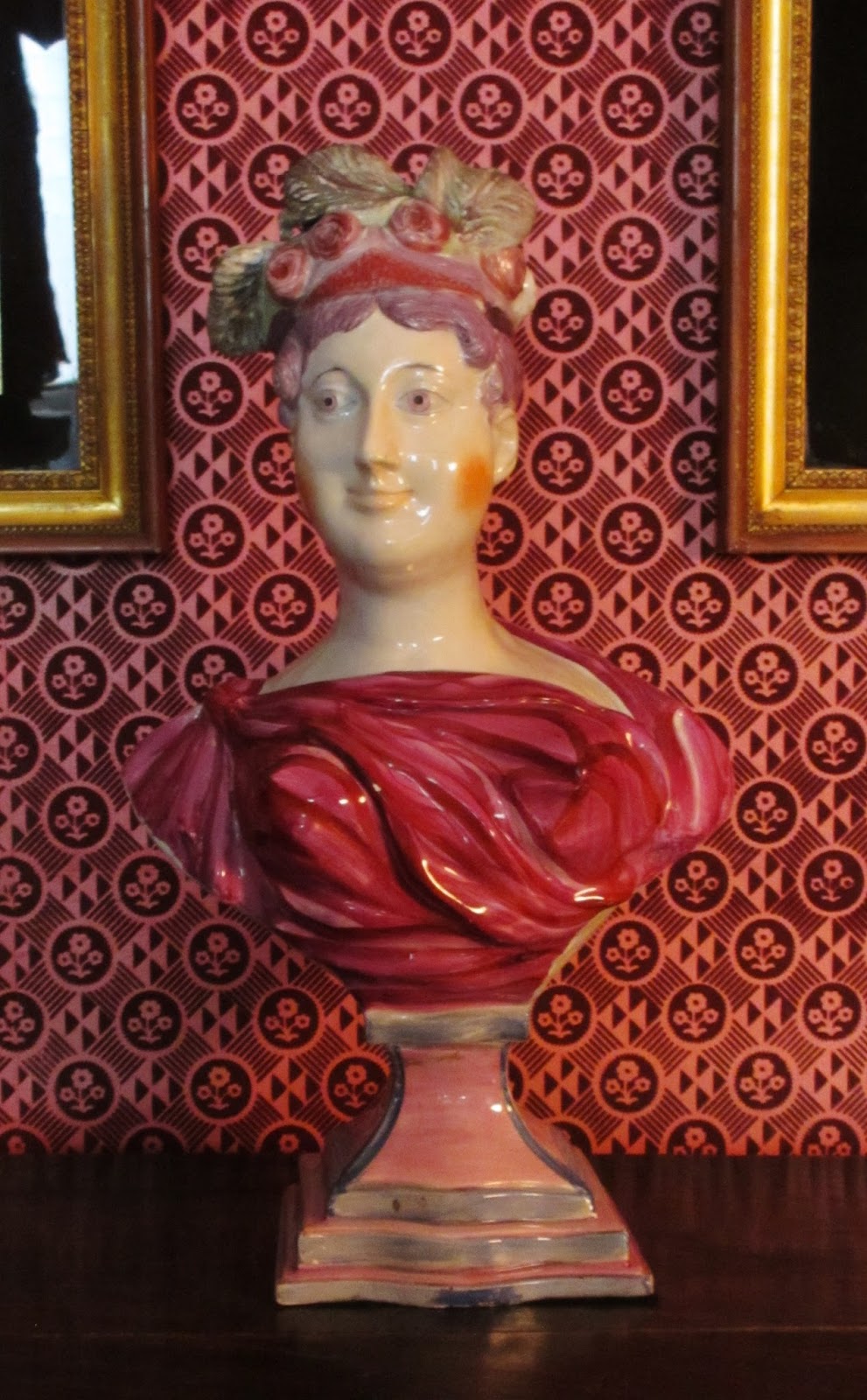Temple Newsam House, Leeds.
Many people outside the antiques trade have quite a low opinion of we dealers. At the moment, in my inbox, there is an email conversation going on between members of an online local history group I follow, concerning some fascinating papers up for sale on eBay.
"I'll bet they cost him a few pence at a car boot sale!"
"I've made him a low offer. I don't really want them, but I'm worried he'll bin them if nobody buys them."
They need not worry, most people in our business have both respect and regard for the objects they buy for re-sale. Some keep things for a while, enjoying their beauty, even if only temporarily. Others lovingly restore neglected pieces to their former glory, while others spend time finding out as much history as possible about an item before selling it on. The last thing they would do is "bin them", in fact, most of us wonder how previous owners could bring themselves to part with such interesting knick knacks!
The other day, pursuing some research of our own, we visited Temple Newsam House, a Tudor/Jacobean building owned by Leeds City Council, on the outskirts of Leeds. It is truly a treasure house, open to the public, though it no longer allows photography inside (or perhaps we weren't persuasive enough on this occasion). If you look hard at the photo above you will see Mr N sneakily snapping something through the back window!
This.
The object is a huge 18th century silver wine cooler, commissioned by Thomas Wentworth, 3rd Baron Raby, when he became ambassador to Berlin in 1706. This was recently saved from export thanks to a fundraising campaign by Leeds Museums and Galleries.
A couple of years ago we were allowed to take photos inside the house after signing an official-looking document, so I can share some interior views we took then.
On our last visit I was keen to have a close look at the wallpaper designs in the house, many of them accurate copies of earlier patterns.
Our latest task was to find a date for some lengths of embroidered fabric I found recently. Temple Newsam houses the Henry Gibson and the Roger Warner collections of textiles, dating from 1450 to 1900, with many examples mounted in glass cases and on public view. I'm fairly sure my pieces are household linens, probably from old bed-curtains, imported from Gujarat in the 17th or 18th century by the East India Company, but I would like to pinpoint the date and origin more precisely.
Which brings me to the late, great antiques dealer, the above-mentioned Roger Warner. He was a Quaker and pacifist. He bequeathed many important pieces to museum collections, including Temple Newsam House. Here is an extract from his 2008 obituary in The Independent:
"Warner's discernment gave him a legendary reputation and a lasting importance. He directed taste towards objects that had been disregarded or even derided. With pioneers such as Enid Marx, Margaret Lambert, Barbara Jones and John Fowler, he fostered appreciation of the naïve, the humble and simply the quirky. Thereby he ensured that popular, regional and vernacular arts, whether wooden furniture, pottery, treen, metal-wares, textiles and domestic utensils, were saved and studied.
Unobtrusively, but firmly, he ensured that rare survivals - from fragments of 18th-century wall-coverings, chintzes, cottons and worsteds, early daguerreotypes to urns designed by Robert Adam - entered appropriate institutions. The Victoria and Albert Museum, Temple Newsam House outside Leeds, The Museum of Rural Life at Reading, Colonial Williamsburg and the Ashmolean in Oxford all benefited. Much in the bizarre accumulation of Charles Wade at Snowshill Manor in Gloucestershire (now owned by the National Trust) came from Warner's shop."
So you see, antique dealers are not necessarily bad people, nor are they all philistines.
After his death many of Roger Warner's own antiques were sold by auction and Temple Newsam House acquired another of his treasures.
This antique doll's house with a Charlotte Bronte connection.
Charlotte was employed as a governess by the Sidgwick family of Skipton in 1839 and it is thought that she redecorated this Georgian doll's house during her time with them. She wrote about Mrs Sidgwick to Emily;
"...she overwhelms me with oceans of needlework; yards of cambric to hem, muslin nightcaps to make, and, above all things, dolls to dress."
As for my own textile dilemma - I'm none the wiser so the research continues.
***



.JPG)

































